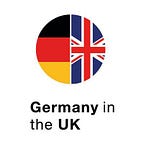Darmstadt — a hidden champion among German cities located in one of Europe’s most prosperous regions
Located in one of Europe’s most prosperous regions, the Rhine-Main-Area, Darmstadt is a hidden champion among German cities. It is an excellent location for science and offers a distinguished history, unique landmarks, as well as vibrant cultural and sporting events to its visitors.
Things to see and do
Science and Technology
Since 1997 Darmstadt has held the official title City of Science (Wissenschaftsstadt in German) as it is a major centre of scientific institutions and high-tech companies. The Technical University of Darmstadt (TU Darmstadt in German) was the first university in the world to set up a chair in electrical engineering (1882). Back in the 20th century, chemical industries and electronics sectors became increasingly important, and are still a major part of the city’s economy. The European Space Operations Centre (ESOC), the main mission control centre for the European Space Agency, is located at the west side of the city. Several chemical elements such as bohrium (1981) and darmstadtium (1994) were discovered in the GSI Helmholtz Centre for Heavy Ion Research. Merck, the city’s largest employer, is the world’s oldest pharmaceutical company.
Centre of Art Nouveau
Darmstadt was a centre of the Art Nouveau movement. Surviving examples of this period include Rosenhöhe, a landscaped English-style rose garden from the 19th century, recently renovated and replanted, Mathildenhöhe, with the wedding tower (Hochzeitsturm) by Joseph Maria Olbrich, the Russian Chapel in Darmstadt and large exhibition halls as well as many private villas built by Art Nouveau architects who had settled in Darmstadt. German Art Nouveau is commonly known by its German name, Jugendstil.
Luisenplatz
Luisenplatz, the central square of the city, forms the centre of the city and is the main public transport hub. In 1844 the Ludwigsäule, a 33-metre column commemorating Ludwig I, first Grand Duke of Hesse, was placed in the middle of the square. While the column still stands, the square is today surrounded by mostly modern buildings. Other important squares are the market square (Marktplatz) near the old city hall and Sabaisplatz at the Mathildenhöhe.
Hundertwasser’s Waldspirale
Darmstadt has a rich tradition in modern architecture. After 1945 several architectural landmarks (Meisterbauten) were built that set standards for modern architecture. These buildings still exist and are used for various public and private purposes. In the late 1990s the so-called Forest Spiral (Waldspirale) was built, a residential complex by modernist Austrian architect Friedensreich Hundertwasser. Hundertwasser has become internationally famous for his rejection of rectangular forms, down to every window having a different shape.
Schlossgrabenfest, Heinerfest
Established in 1999, Schlossgrabenfest has become one of the largest music festivals in the State of Hessia and one of the biggest free open-air events in Germany taking place in May. It brings live music from a wide spectrum: Rock, Pop, Electro, Reggae and Hip-Hop, Soul and Jazz attracting 700,000 visitors. Heinerfest festival is held in the streets surrounding the old ducal palace around early July, every year. It is a traditional German festival with music acts, beer halls, amusement rides and booths selling trinkets and food, attracting up to 400,000 visitors.
SV Darmstadt 98
One of Germany’s most likable football clubs, SV Darmstadt 98, was founded on 22 May 1898. Following a 33-year run in the lower leagues and insolvency, the football club made a surprising comeback to the Bundesliga in 2015. The club went into the 2015/16 campagin with limited finances and an underdog image and were able to gain widespread support among traditional-minded football fans. Known as the Darmstädter Lilien (The Lilies), the club secured their topflight status by finishing 14th. When teenage fan Jonathan Heimes died from cancer in 2016, the club renamed its stadium to ‘Jonathan-Heimes-Stadion am Böllenfalltor’ for the 2016–17 season.
How to get there
Darmstadt can be reached from London by air, with Frankfurt Airport 24 kilometres away or by train via Brussels and Luxemburg.
British-German Town Twinnings
Town twinnings between British and German cities play an important role in promoting cultural exchange. Darmstadt has been twinned with Chesterfield in Derbyshire since 1959.
